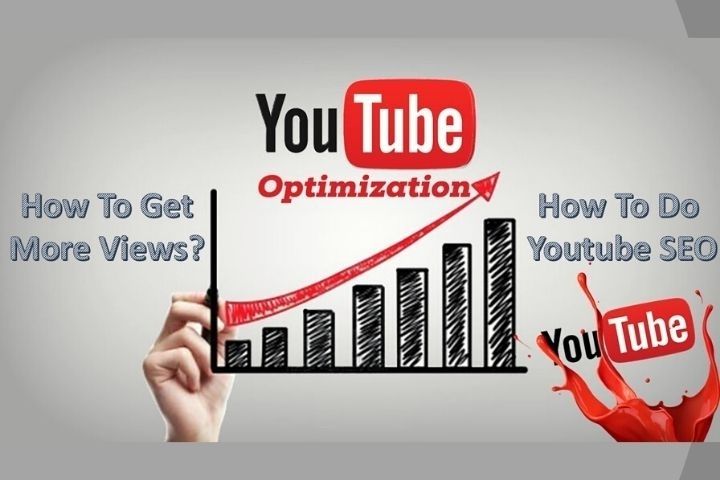When you’re uploading videos or shorts to YouTube, you want as many people to see them as possible.
For some, that happens. They go viral.
Others, though? They drop straight into obscurity.
Why?
What’s the difference between a video that pops up in people’s recommendations and gets thousands of views, and a video that barely manages a dozen?
In many cases, it’s a matter of SEO – search engine optimization.
After all, YouTube is the world’s second-biggest search engine – right after Google. Millions of people launch queries every day.
And YouTube has a sophisticated, complex algorithm that makes sure that the results of these queries match their users’ expectations.
Your job as a video creator is to make sure that YouTube’s algorithm can find and index your content properly.
That’s where YouTube SEO comes in. By working through the steps below and ticking all the boxes, you’ll be able to help your video on the way to going viral.
1. Choose Your Keywords Carefully
First, carefully think about which keywords you want to aim for. Keywords are words and phrases that people use in their searches.
The more specific your target keywords are, the better.
For example, someone who’s trying to learn how to knit might search for “knitting socks for beginners” instead of just “knitting”. The better your keywords capture the search intent of your target audience, the more likely they are to find your content.
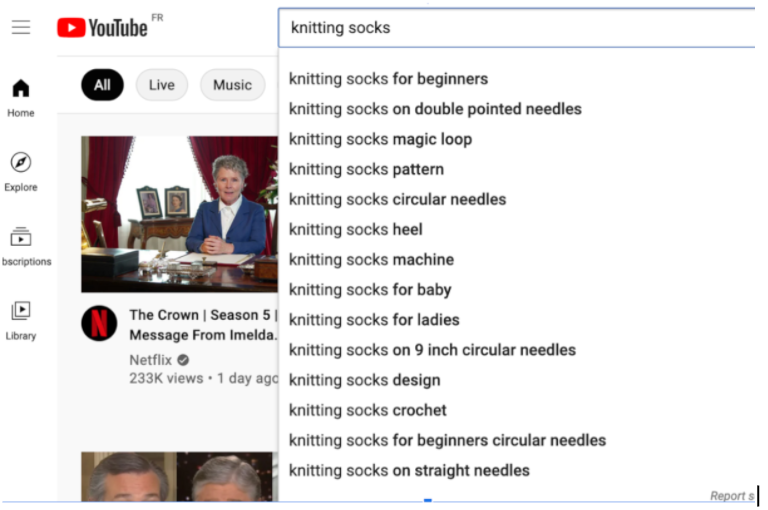
If you’re strapped for keyword ideas, you can check Google’s autocomplete feature, as well as Google Trends and keyword research tools. The latter will also give you an idea of the volume of searches for specific keywords and how difficult it is to rank for them.
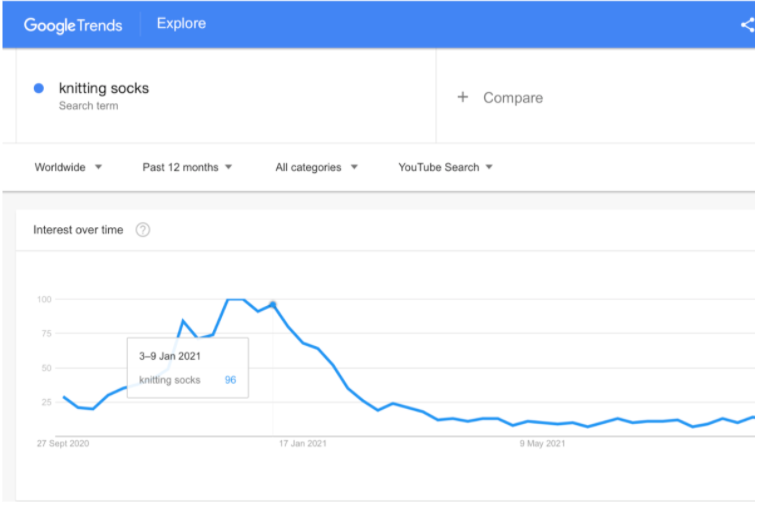
2. Select The Right Title
Next, carefully craft your title. Make sure to include your exact keywords.
While it’s OK to be creative, your title needs to reflect the content of your video. Don’t be cryptic – most users would rather know what to expect.
Before writing your own title, check what formats are popular in your YouTube niche. Trends and preferences vary considerably – and so do the expectations of viewers.
3. Optimize Your Video Description And Include Chapters
As a third step, optimize the description of your video.
Again, you should include your keywords and any information that could be pertinent to users.
If you’re aiming to monetize your YouTube channel, this is also where your affiliate links or links to tipping platforms go. Don’t forget to disclose all your affiliations here, too.
One particular SEO booster to include in your video description are chapters. Simply identify important points in your video and include a timestamp and title for them in the video description.
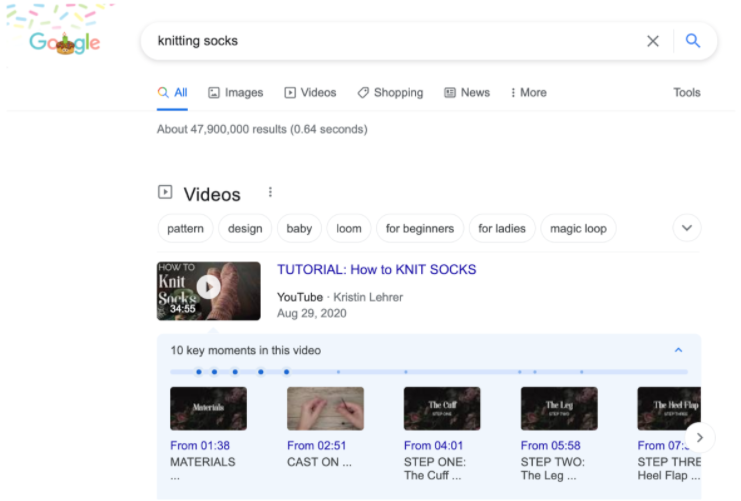
In Google searches, chapters already show up as key elements of video results. And in Summer 2021, YouTube announced that it would also show them in its on-page search results.
While there is now also an algorithm that adds chapters to videos automatically, doing it manually gives you an advantage: You can explicitly include all your keywords and related words and phrases.
4. Harness Hashtags And Tags
As a next step, think about which tags and hashtags to use.
Tags you can set in your video metadata. They used to be fairly important to YouTube SEO, but have lost much of their traction since the mid-2010s. Nowadays, they are useful mostly if you include words like brand names or names of individuals that are easily misspelled.
Hashtags, on the other hand, are up and coming. By #tagging your content, you signal to YouTube’s algorithm what broad context your video falls under. It complements setting a category for your video in your metadata.
In addition, YouTube recently launched hashtag landing pages. When users search for a particular hashtag, the first result is now a landing page.
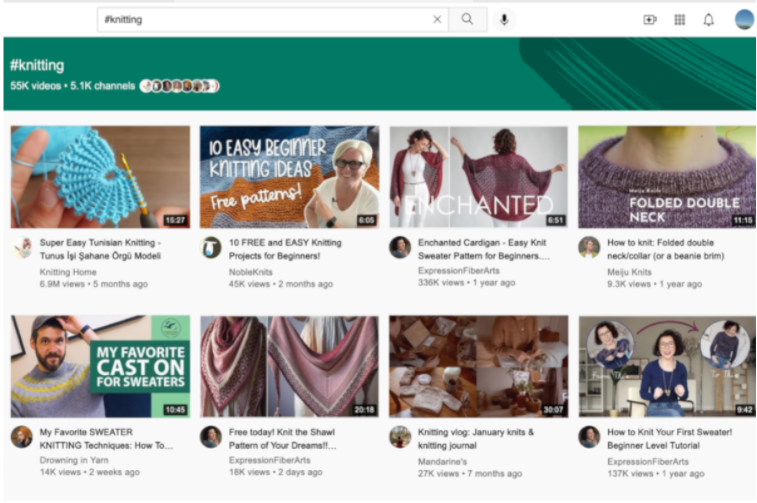
This landing page offers curated content on a particular topic that users can explore. It’s interesting for SEO because it mixes older and newer videos, those with millions of views and those with only a few thousand.
How exactly this works, YouTube hasn’t yet revealed. However, it gives your content another shot at being discovered.
5. Upload Captions
Another SEO avenue to pursue is to upload custom captions to your videos.
As for chapters, YouTube auto-generates these – in a few languages, at least. However, as in the previous case, adding them yourself lets you place your keywords prominently.
Generally, you shouldn’t underestimate the importance of captions. A survey by Verizon found that as many as 69% of people like to watch YouTube videos with the sound off in public. 25% also do so in the privacy of their own home.
Furthermore, solid captions are also a great basis for translating them into different languages, which makes your video available to a wider audience.
If you want to go with auto-generated captions, though, at least make sure that you say your keywords several times throughout the video.
7. Optimize Your End Screen
Finally, you can also optimize the end screen of your video. This might not come to mind immediately when you think about SEO, but it matters indirectly.
By creating an end screen that links back to your channel or to other videos, you can increase the likelihood that people who have watched one of your videos will also watch others.
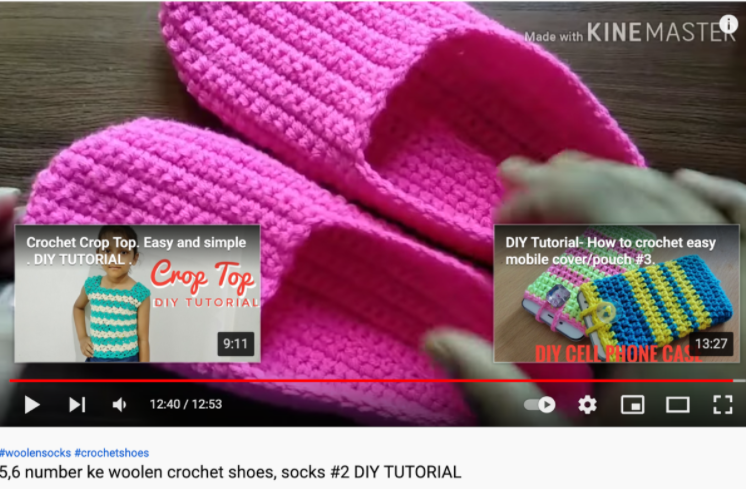
This matters to YouTube’s algorithm. If people who have stayed until the end of your video click on to more content of yours, it works like a badge for the quality you have produced. It thus increases the chances of your video showing up in search results and recommendations.
Conclusion
Optimizing your video for YouTube SEO is a crucial step to make sure your fantastic videos actually get discovered by viewers.
At first, ticking all the boxes above may take some time and getting used to. However, after uploading your videos like this for a while, it becomes part of your routine.
And ultimately, it will help you on your way to growing your YouTube channel, establishing an audience, and going viral.

